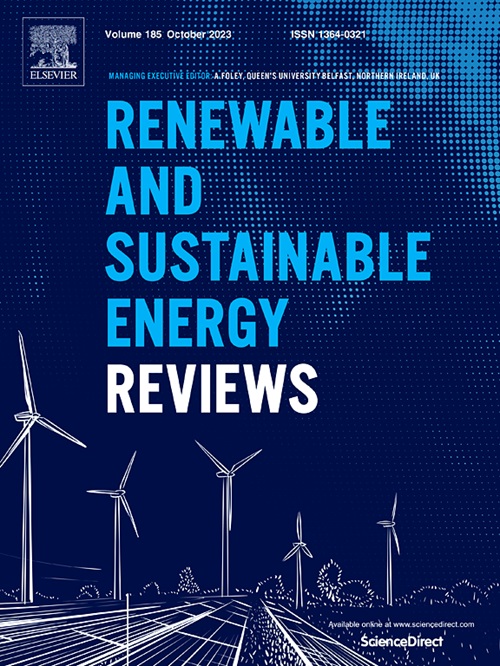A systematic review of enhancing stabilization performance and mitigating thermoacoustic instability in renewable ammonia turbulent combustion
IF 16.3
1区 工程技术
Q1 ENERGY & FUELS
引用次数: 0
Abstract
Ammonia, as a carbon-free and hydrogen energy carrier, is receiving emerging interest to mitigate anthropogenic carbon dioxide emissions from power generating systems and aviation propulsion sectors. While ammonia combustion is a theoretically feasible alternative to tackle greenhouse gas issues, the realization of such a renewable fuel in large-scale combustion systems requires an understanding of turbulent flame dynamics and stability in consideration of the poor combustion characteristics such as the low laminar burning velocity and high ignition energy. This paper reviews the recent advances and developments of ammonia turbulent combustion that contribute to providing insight into the combustion fundamentals and guiding combustor design for practical applications. The fundamental characteristics of ammonia turbulent flames are first introduced. This is followed by a detailed discussion concerning the stabilization enhancement strategies of ammonia turbulent flames, along with the underlying physical/chemical mechanisms. Furthermore, the dynamical thermoacoustic instability of ammonia flames possibly occurring within gas turbine engines is characterized, with the emphasis being placed on the generation mechanisms and mitigation means. Finally, this paper concludes with future research directions and perspectives.
提高可再生氨湍流燃烧的稳定性能和减轻热声不稳定性的系统综述
氨作为一种无碳和氢能源载体,在减少发电系统和航空推进部门的人为二氧化碳排放方面正受到越来越多的关注。虽然氨燃烧在理论上是解决温室气体问题的可行替代方案,但考虑到低层流燃烧速度和高点火能量等不良燃烧特性,在大规模燃烧系统中实现这种可再生燃料需要了解湍流火焰动力学和稳定性。本文综述了氨湍流燃烧的最新进展和发展,有助于深入了解燃烧的基本原理和指导实际应用中的燃烧器设计。首先介绍了氨湍流火焰的基本特征。随后详细讨论了氨湍流火焰的稳定化增强策略,以及潜在的物理/化学机制。进一步分析了燃气轮机内氨火焰的动态热声不稳定性,重点讨论了氨火焰的产生机理和缓解方法。最后,对未来的研究方向和展望进行了总结。
本文章由计算机程序翻译,如有差异,请以英文原文为准。
求助全文
约1分钟内获得全文
求助全文
来源期刊

Renewable and Sustainable Energy Reviews
工程技术-能源与燃料
CiteScore
31.20
自引率
5.70%
发文量
1055
审稿时长
62 days
期刊介绍:
The mission of Renewable and Sustainable Energy Reviews is to disseminate the most compelling and pertinent critical insights in renewable and sustainable energy, fostering collaboration among the research community, private sector, and policy and decision makers. The journal aims to exchange challenges, solutions, innovative concepts, and technologies, contributing to sustainable development, the transition to a low-carbon future, and the attainment of emissions targets outlined by the United Nations Framework Convention on Climate Change.
Renewable and Sustainable Energy Reviews publishes a diverse range of content, including review papers, original research, case studies, and analyses of new technologies, all featuring a substantial review component such as critique, comparison, or analysis. Introducing a distinctive paper type, Expert Insights, the journal presents commissioned mini-reviews authored by field leaders, addressing topics of significant interest. Case studies undergo consideration only if they showcase the work's applicability to other regions or contribute valuable insights to the broader field of renewable and sustainable energy. Notably, a bibliographic or literature review lacking critical analysis is deemed unsuitable for publication.
 求助内容:
求助内容: 应助结果提醒方式:
应助结果提醒方式:


